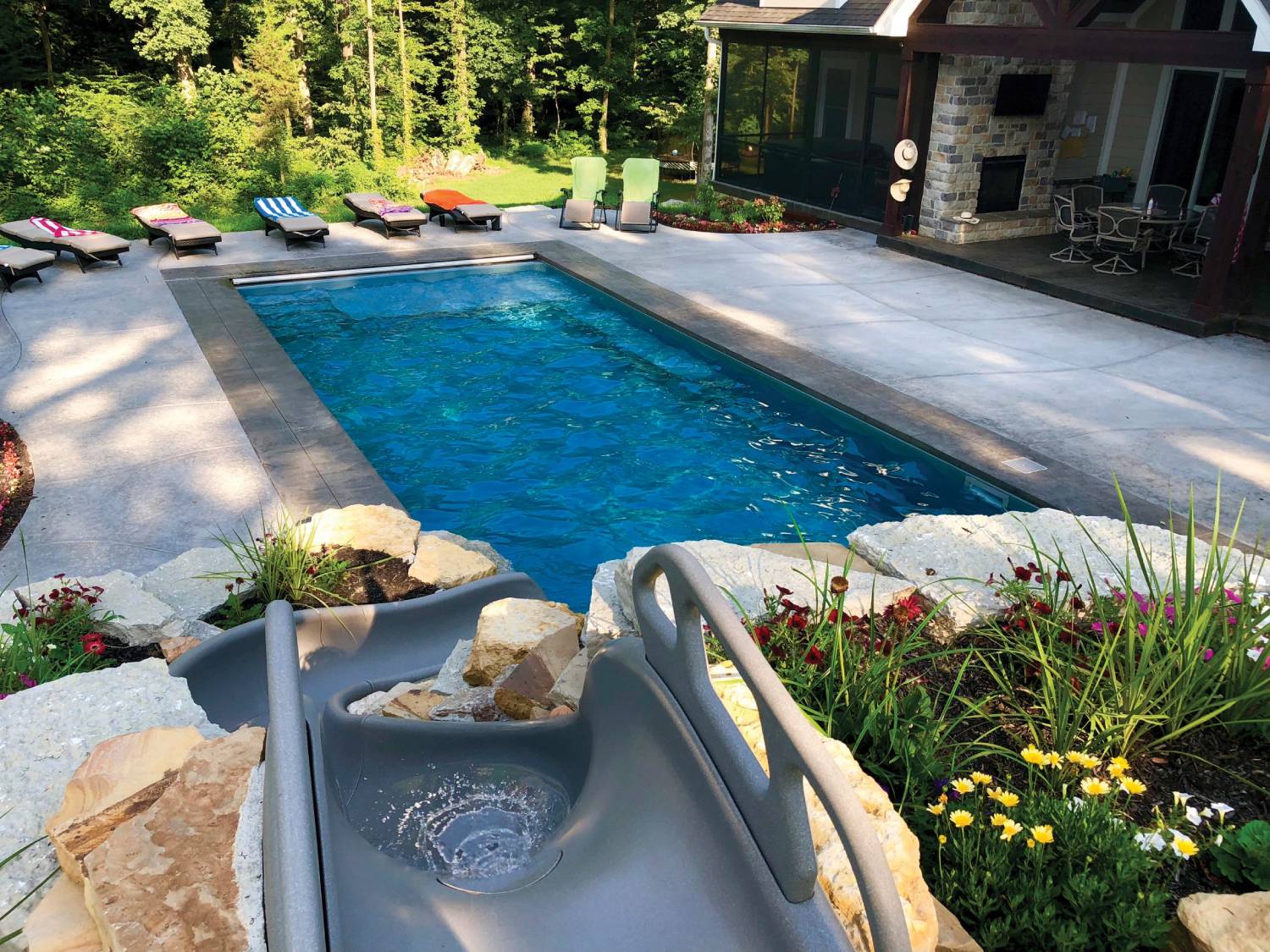
At Sun Pools, we know choosing the perfect pool is a big decision, and we’re here to make the process as smooth as possible. Whether you’re curious about fiberglass pool durability, upfront costs, or how to maintain your new pool, we’ve got you covered.
Check out our FAQs to get the details you need.
Is a fiberglass pool liner more expensive than a vinyl pool liner?
Yes, fiberglass pool liners have a higher upfront cost than standard vinyl liners. However, fiberglass is far more durable, meaning you won’t have to replace it every five to 10 years like with a vinyl liner. Plus, fiberglass pools require less maintenance, fewer chemicals, and lower long-term costs, making them a smart investment over time.
How long do fiberglass pools last?
A well-maintained fiberglass pool can last 50 years or more. Thanks to their durable, non-porous surface, fiberglass pools resist algae buildup and wear much better than vinyl or concrete alternatives. With proper care, they provide decades of hassle-free enjoyment.
How do I install a fiberglass pool?
Installing a fiberglass pool is a precise and professional process that typically takes a few weeks. Through our dealer network, experienced professionals handle every step, ensuring a seamless installation and a pool that’s built to last.
Here’s how it works:
- Excavation: The installation team carefully measures the site and excavates the area to create a space that perfectly fits the fiberglass pool shell.
- Base preparation: A stable foundation is created by laying a sand or gravel base, ensuring the pool sits securely and evenly.
- Pool placement: The pre-manufactured fiberglass shell is delivered to the site and carefully lowered into the excavated area.
- Plumbing and backfilling: The pool’s plumbing and filtration system are connected, and the surrounding space is backfilled with material to secure the structure in place.
- Decking and finishing touches: The pool area is completed with concrete or paver decking, and the pool is filled with water to prepare it for use.
Once the water is properly balanced and the system is running smoothly, your fiberglass pool is ready for you to dive in and enjoy.
Are fiberglass pools cheaper than other pools?
While fiberglass pools have a higher initial cost than vinyl, they’re more affordable than concrete pools in the long run. Fiberglass pools require minimal maintenance, fewer chemicals, and no resurfacing, saving homeowners thousands over time. They also have a smooth, non-porous surface that resists algae, reducing cleaning time and upkeep costs.
What is a fiberglass pool?
A fiberglass pool is a pre-molded, one-piece swimming pool made from durable fiberglass coated with a gel finish. These pools come in a variety of shapes and sizes and are known for their strength, low maintenance, and fast installation — often completed in just a few weeks.
How do I clean a fiberglass pool?
Fiberglass pools are easy to clean thanks to their smooth, non-porous surface. Follow these simple steps:
- Skim the surface: Use a skimmer or net daily to remove leaves, bugs, and debris, preventing buildup and keeping the water clear.
- Brush and vacuum: Gently brush the pool walls and floor to prevent algae, and use a vacuum to remove settled dirt for a spotless pool.
- Check water chemistry: Test and maintain proper pH, chlorine, and alkalinity levels to ensure clean, balanced, and safe water.
- Filter and circulate: Run the filtration system daily to keep water clean, distribute chemicals evenly, and prevent stagnation.
- Shock as needed: Periodically add pool shock to eliminate contaminants, prevent algae, and maintain crystal-clear water, especially after heavy use or storms.
With routine care, your fiberglass pool will stay sparkling clean for years to come.
Have a question we haven’t answered? Contact us to learn more about our fiberglass pool selections.

